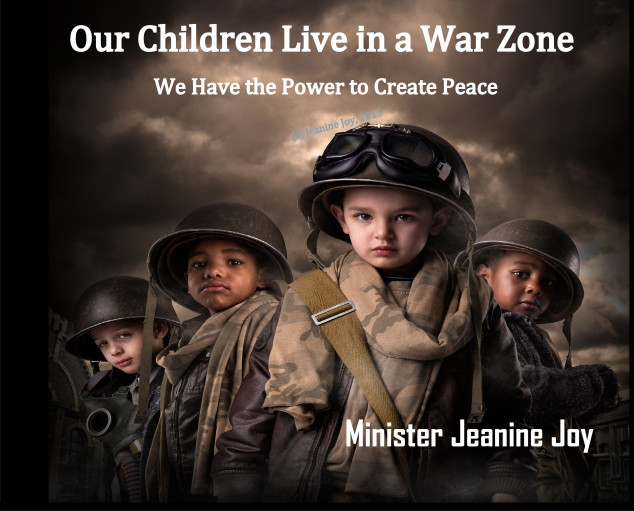Time to Transform Education
Why Transform Education?
Sometimes you don’t know what you’re looking for until you find it.
While reading peer-reviewed journals that provided pieces of the human thriving puzzle, I kept coming across research demonstrating that when children are taught certain soft skills, the trajectory of their lives improved. Since diverting a child’s trajectory from prison, addiction, and poverty to better results meets my definition of increasing human thriving, I followed the threads. Each research article provides citations to earlier articles and later articles that cite the article are also easy to identify.
What I learned both thrilled and angered me. It thrilled me because it is very clear that we can end the school-to-prison pipeline, significantly reduce the 1.5 million 17-year-olds who go to jail each year, and improve outcomes in positive ways. We can increase high school and college graduation rates and reduce the mental, physical, and behavioral ravages caused by chronic stress.
It angered me because the research is conclusive that we now know how to help these children and prevent their suffering and we aren’t doing it globally or even nationally. This upset me so much I dedicated most of my time over the next year to clearly documenting the research and articulating a better way forward. That work culminated in a book titled, Our Children Live in a War Zone: Use the Power of Resilience to Improve Their Lives.
The book is designed to teach parents and teachers state-of-the-art social and emotional management skills so they can, in turn, teach them to children. Since we have not historically taught these skills, just being an adult does not mean an individual understands healthy ways of interacting. The high number of marriages that end in divorce is a clear testament to this truth. When we transform education we transform children’s lives away from poverty, hunger, violence, drugs, and hopelessness.
Children need us to transform education faster
A few schools across the country have implemented programs that teach these skills, although I have not yet seen any that incorporate the latest research about emotions. Even without being as comprehensive as they should be, the results they are attaining are phenomenal. The following video begins with the same quote I often use, “An ounce of prevention is worth a pound of cure.”
The video is R. Keeth Matheny of Austin, TX, at a Capitol Hill briefing held by Committee for Children, in collaboration with the Collaborative for Academic, Social, and Emotional Learning (CASEL), on the importance of effective social and emotional learning (SEL) at every stage of education, from early learning through college and career prep.
Extrapolating the from Austin High school data and assuming the same results across America would result in:
- 24 million additional passing grades
- 8.6 million fewer discipline referrals in American High Schools
- 12 million more time-on-task for teachers
In addition to hard data, they also theorized that suicide and severe depression would be reduced. I can attest to that because after I taught a program in a local high school one of the student’s mother’s contacted me to tell me that her son disclosed to her that when I began teaching the class he was planning to die and the class led to his changing his mind.
Failing 9th grade greatly increases the risk the child will drop out of high school. Failing 9th grade is highly correlated to drop outs. 20% of students currently never finish high school. Students who drop out are:
- 3 times more likely to be unemployed
- 4 times more likely to live their lives in poverty
- 63 times more likely to be incarcerated
We need to transform education and workplace training
According to the video, 40% of employers said high school and college graduates are sorely lacking social and emotional skills, which makes them unready to function well in a job.
Employers have another choice–because social and emotional skills have never been taught in schools so none of your employees have as well-developed skills in that area as they could. When you consider the bickering and worse that often distracts from productive pursuits at work, the savings from increasing employees social and emotional skills can pay significant dividends. One of the benefits would be increased engagement.
It’s time for responsible federal and state policy makers to incorporate evidence-based data in public policy and school curriculums.
I checked on the bill (H.R.4509: Supporting Emotional Learning Act) introduced in 2014 and learned it has been stuck in the Subcommittee on Early Childhood, Elementary, and Secondary Education for nearly two years. Maybe the committee needs members who care about our children. Sitting on legislation that improves lives and saves money in the long-term via crimes not committed, poverty averted, and better mental and physical health is unconscionable.
What do you think? Why would anyone stall legislation that would improve outcomes of children?
If you want to learn more about the research that supports social and emotional learning and strategies to teach your children or students, you can find everything you need right here.
A link to purchase Rescue Our Children from the War Zone is on the right side of this page. It contains 760 citations supporting the value of social and emotional learning skills and building resilience in children.
While we’re transforming education, we should also let teachers decide how to run their classrooms and how to teach their students. They are on the front lines and they can read the room far better than someone who is not present. Teachers, like physicians, are paying a heavy price for administrative burdens and rules decreed by people who don’t do the same job. Teacher burnout causes students to lose many good teachers every year and causes teachers physical and mental health to decline. The book I co-authored on Burnout Prevention and Recovery, Resilience and Retention for the health care industry would be of great benefit to teachers as well.
[contact-form-7 id=”2377″ title=”Basic (new) contact form”]



